Rank Species | Suborder Sauria Genus Aspidoscelis Higher classification Aspidoscelis | |
 | ||
Similar Cnemidophorus, New Mexico w, Aspidoscelis, Reptile, Teiidae | ||
The desert grassland whiptail lizard (Aspidoscelis uniparens) is an all-female species of reptiles. It was formerly placed in the genus Cnemidophorus. A. uniparens have limited social stimuli, having only two basic needs: finding food and avoiding predators. A common predator of the whiptail lizard is the leopard lizard, that prey on A. uniparens by using ambush and stalk haunting tactics. These reptiles reproduce by parthenogenesis. In this process, eggs undergo a chromosome doubling after meiosis and developing into lizards without being fertilized. However, ovulation is enhanced by female-female courtship and "mating" (pseudo-copulation) rituals that resemble the behavior of closely related species that reproduce sexually.
Contents
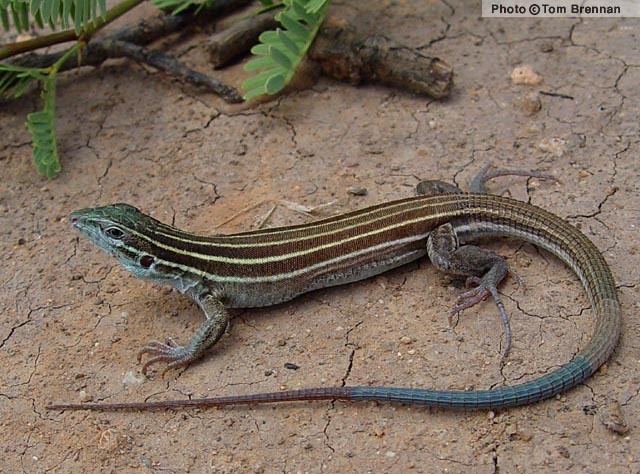
Description

The desert grassland whiptail lizard is a relatively small reptile, whose size ranges from 2¾ inches (69 mm) to 5¼ inches (137 mm). Desert grassland whiptails are very long and slim, with a thin tail that is longer than their body length. Their distinct identifying feature are the six yellowish lines that run the length of their body. The majority of the whiptail's body tends to be an olive or brown colour that fades to a faint blue or gray on their tail. Comparatively, an adolescent's tail is a very bright and vibrant blue. Their bodies are lined with small coarse scales, which gradually get larger as they approach the tail. The scales on their bellies are much larger in size and are much smoother as well.
Taxonomy
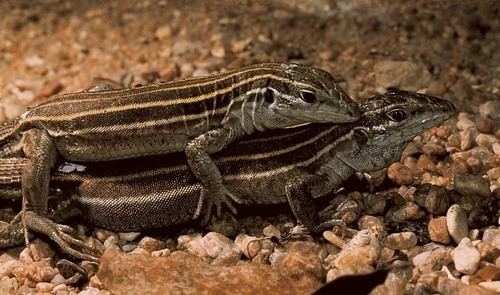
The taxonomy of the genus was unknown until the 1950s to early '60's. A 1958 report confirmed that no male lizards had been discovered in a collection of specimens of C. tesselatus. That very year, parthenogenesis was confirmed in the genus Lacerta of the family Lacertidae. Soon after, researchers discovered that there were also no males in C. exsanguis, C. neomexicanus, or C. velox. Rather than subsume all cnemidophorine species into a single large genus, Lowe and Wright proposed a split that placed the North American "Cnemidophorus" clade in the monophyletic genus Aspidoscelis. Under this arrangement, South American taxa remain in the genus Cnemidophorus.
Habitat
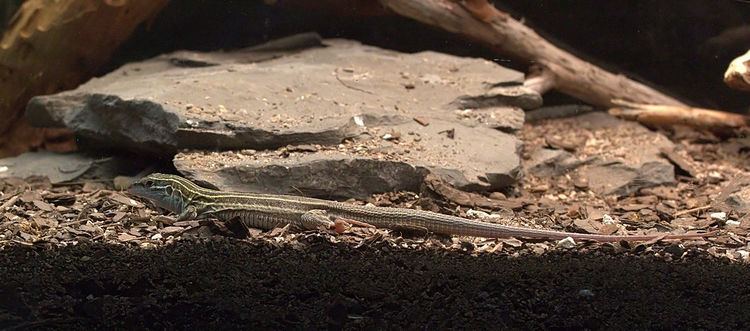
The desert grassland whiptail is mostly found in the deserts of southern to central Arizona and along the Rio Grande river in New Mexico. It is also found in the deserts of northern Mexico. A. uniparens is commonly found in low valleys, grasslands, and slight slopes. Some have argued that the species' range is expanding due to overgrazing. A. uniparens are scarce in developed areas, especially where homeowners keep livestock.
Hybridization and reproduction
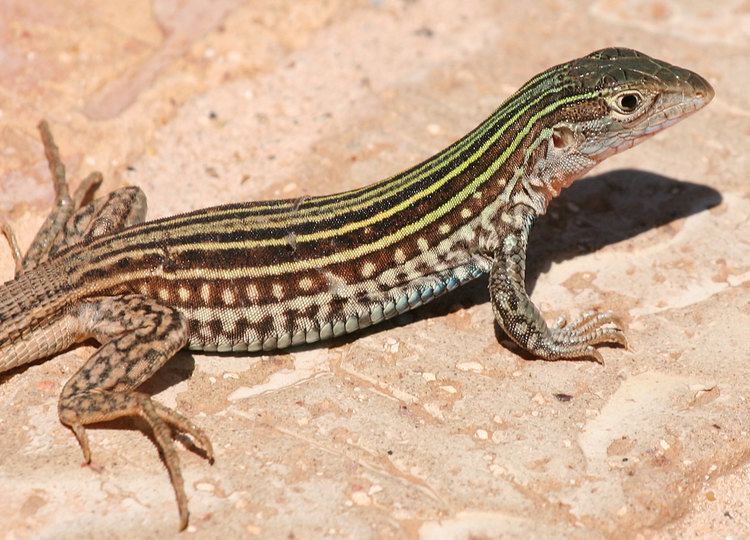
All desert grassland whiptail lizards are female. Their reproduction process does not need male fertilization, although researchers observed pseudo-copulation that promotes fertilization during ovulation. This process involves the alternation between male-typical and female-typical sexual behaviors, driven by progesterone, in both lizards; corresponding to the state of their partner. The lizards reproduce by parthenogenesis, but offspring do not necessarily have the same chromosomes as their mother. This is because the lizards start off with twice the amount of chromosomes as lizards that do not parthenogenically reproduce. This diversity is maintained by combining sister chromosomes instead of pairing homologous chromosomes. Current studies suggest that the lizards may be able to distinguish between homologous and sister chromosomes. The lizard is a triploid unisexual species that reproduce asexually. The lizards were a result from a cross breed of two bisexual species, A. inornata and A. burti. This then produced a diploid unisexual, which backcrossed to inornata and produced triploid uniparens.
Food habits
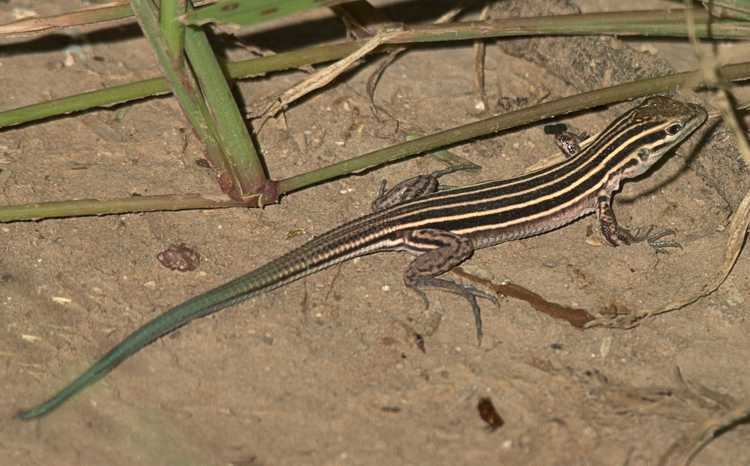
Insects are the primary diet for desert grassland whiptail lizards. For the most part, they eat spiders, termites, antlions, beetles, and short-horned grasshoppers. Their dominant foods vary little over time. Research suggests that this may be because "sexual variation was more evident; it may act to reduce intraspecific competition for food resources and may be associated with secondary sexual size dimorphism."
